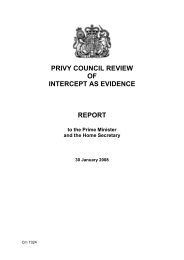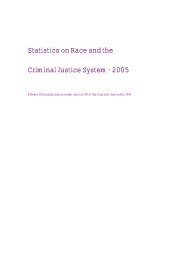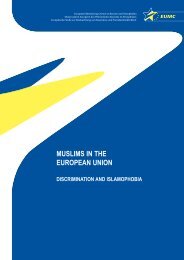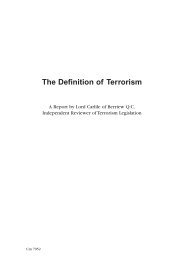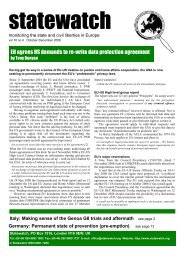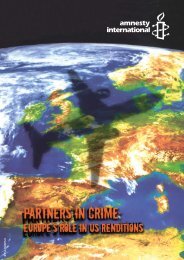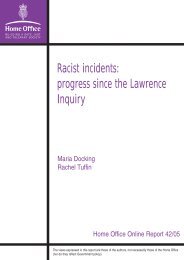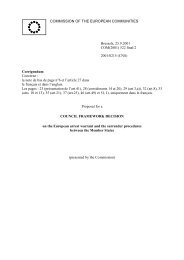RACIST VIOLENCE IN 15 EU MEMBER STATES - Cospe
RACIST VIOLENCE IN 15 EU MEMBER STATES - Cospe
RACIST VIOLENCE IN 15 EU MEMBER STATES - Cospe
Create successful ePaper yourself
Turn your PDF publications into a flip-book with our unique Google optimized e-Paper software.
<strong>RACIST</strong> <strong>VIOLENCE</strong> <strong>IN</strong> <strong>15</strong> <strong>EU</strong> <strong>MEMBER</strong> <strong>STATES</strong> - A Comparative Overview of Findings from the RAXEN NFP Reports 2001-2004<br />
21.1.2. Political and policy influences on recording racist<br />
violence<br />
As highlighted in each of the country profiles, the priority assigned to counting<br />
racist violence needs to be interpreted against the backdrop of each Member State’s<br />
political and policy background. Together, a number of key factors influence the<br />
data collection process.<br />
In general terms, consideration should be given as to whether crime is prioritised as<br />
a social problem and, specifically, whether victims of crime are prioritised<br />
alongside offenders. As criminal justice systems have traditionally focused their<br />
activities on criminals – their apprehension, conviction and sentencing – and not<br />
victims, there are a number of barriers that have to be surmounted before victims<br />
can be considered equal players in most jurisdictions 117 . In turn, few jurisdictions<br />
give consideration in practice to the special needs of various victim groups – such<br />
as children, women, people with disabilities, and ethnic minorities (to name just a<br />
few).<br />
The extent to which the police act as service providers to victims of crime, in<br />
general, is likely to provide an indication of how they respond to victims of<br />
racist crime and violence, in particular. However, the police’s response to<br />
victims of racist violence is also determined by the extent to which national<br />
minorities and foreign groups are constructed as a ‘problem’ in different<br />
jurisdictions. If the emphasis is to police these groups as a potential threat to social<br />
order, including their construction as a threat to national security, then<br />
prioritisation of their experiences as victims of racism is somewhat at odds with<br />
this position. While it is not unfeasible to combine both responses, a tough police<br />
response to minority communities does not encourage members of these<br />
communities to trust the police and report experiences of criminal victimisation.<br />
Civil society has a significant part to play in promoting positive responses to<br />
victims of crime. Political and policy responses to racist violence can be<br />
influenced by a strong NGO culture that is proactive in highlighting the<br />
experiences of victims of crime, and in particular the experiences of victims of<br />
racism. In addition, a strong culture of data collection and analysis by government<br />
departments, academics and research institutions will encourage data collection on<br />
racist violence. Quality research can be used to alert policy makers and politicians<br />
to core areas for policy intervention in the area of racist crime and violence. In the<br />
absence of a proactive NGO and research culture, there is little evidence that can<br />
be drawn on to highlight the problem of racist violence, besides any media<br />
reporting.<br />
117<br />
Brienen, M.E.I. and Hoegen, E. (2000) Victims of Crime in 22 European Criminal<br />
Justice Systems, Nijmegen: Wolf Legal Productions; Mikaelsson, J. and Wergens, A.<br />
(2001) Repairing the Irreparable, Umeå: Swedish Crime Victim Compensation and<br />
Support Authority; Wemmers, J. (1996) Victims in the Criminal Justice System,<br />
Amsterdam: Kugler.<br />
192



